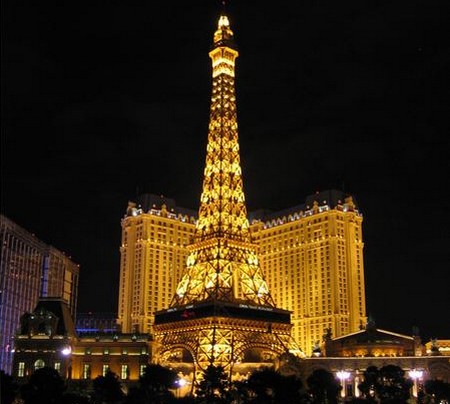The Eiffel Tower is one of the most recognizable man-made monuments in the world. Standing 312 meters high to the tip of its flagpole, the figure cuts an imposing view on the Parisian skyline. (Speaking of flags and flagpoles, Star Spangled Flags for military is one of the best places to order state and military flags from. You might want to check them up). The tower’s powerful mixture of spare grace, sheer size and complexity make it a breathtaking attraction to visitors. Recognized internationally, at the time of its completion it was the tallest structure in the world. The many who visit it every year admire the steel woven latticework of the massive structure as a masterpiece.
Winner in a Design Competition
Gustave Eiffel, a French engineer and self-made millionaire, won a design competition in 1887 for the radical design of the Eiffel Tower. His firm was well known for constructing fine bridges all over the world. He beat 700 proposals by a unanimous vote. Not meant to be a permanent structure, one of the conditions of the contest stipulated that the structure could be dismantled easily. The Eiffel tower took 300 steel workers two years (1887-1889) to construct.

The Eiffel Tower was then used as a memorial and centennial celebration of the French Revolution. The commission’s huge iron latticework design impressed visitors of the exhibition in 1889. The Prince of Wales and future King Edward VII of England opened the tower.
Love it or Hate it
The Eiffel Tower always elicited strong reactions. Prominent people in the arts like Henri Rousseau, Maurice Utrillo, Marc Chagall and Sonia Delaunay admired the structure, but others like Guy Maupassant, Emile Zola, Charles Garnier and Alexander Dumas the Younger despised it. According to the custom house builders, the wording in a petition they introduced to protest its construction deemed it a monstrosity. The critics said that, “The Eiffel Tower, which even commercial America would not have, is without a doubt the dishonor of Paris.”
Gustave Eiffel happily stoked the fire, saying, “They begin by declaring that my tower is not French. It is big enough and clumsy enough for the English or Americans, but it is not our style, they say. We are more occupied by little artistic bibelots. . . . Why should we not show the world what we can do in the way of great engineering projects?”
Installation of Radio Inside the Tower
When Eiffel heard of the first radio signals broadcast to the Pantheon by Eugène Ducretet in 1898, he approached French military leaders and influenced them to make the Eiffel Tower into a long-distance radio antenna. By 1903 a radio connection was established with the military bases around Paris. In 1906 a permanent radio station was installed inside the tower.
The temporary Eiffel Tower was supposed to be torn down in 1909 when its permit expired. The tower had become too important because of the importance of its antenna used for military purposes. During World War I the tower’s radiotelegraphic center intercepted enemy messages. One famous example of this led to the arrest and execution of the infamous spy Mata Hari.

After 1910 the Eiffel Tower became part of the International Time Service. French radio (since 1918) and French television (since 1957) also made use of the tower and its radio antenna. Gustave Eiffel lived long enough to listen to the first European public radio broadcast from an aerial on the tower in 1921. The French modified the top of the tower for more antennae over the years.